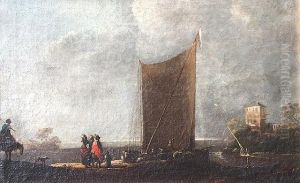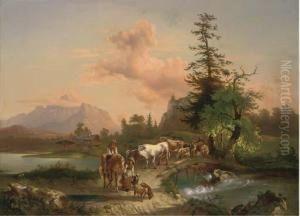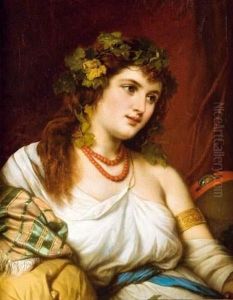Johann Jacob Norbert Grund Paintings
Johann Jacob Norbert Grund was an 18th-century German artist known for his work as a painter, engraver, and art theorist. Born in 1717 in what is today Germany, Grund developed a keen interest in the arts from a young age. He studied under prominent artists of his time and honed his skills in various forms of visual arts.
Grund's work as a painter was characterized by a blend of Baroque and Rococo styles, which were prominent during his lifetime. His paintings typically featured religious and mythological themes, as well as portraits and landscapes. He was adept at capturing the detailed expressions and intricate clothing of his subjects, which made his portraits particularly sought after.
As an engraver, Grund contributed to the proliferation of art by creating reproductions of popular paintings. This allowed a wider audience to appreciate the works of art that were otherwise accessible only to the elite who could afford to commission or purchase original paintings.
Grund was also an art theorist and educator. He wrote about the principles of art and aesthetics, and his writings contributed to the understanding of art during the Enlightenment period. His teachings influenced a number of artists in Germany and beyond, helping to spread new ideas about art and its role in society.
Despite his contributions to the art world, Johann Jacob Norbert Grund is not as widely remembered as some of his contemporaries. Nevertheless, his work remains an important part of the study of 18th-century German art. Grund passed away in 1767, leaving behind a legacy of art that reflects the transition between the Baroque and Rococo periods and the evolving taste of the European art world during his time.










